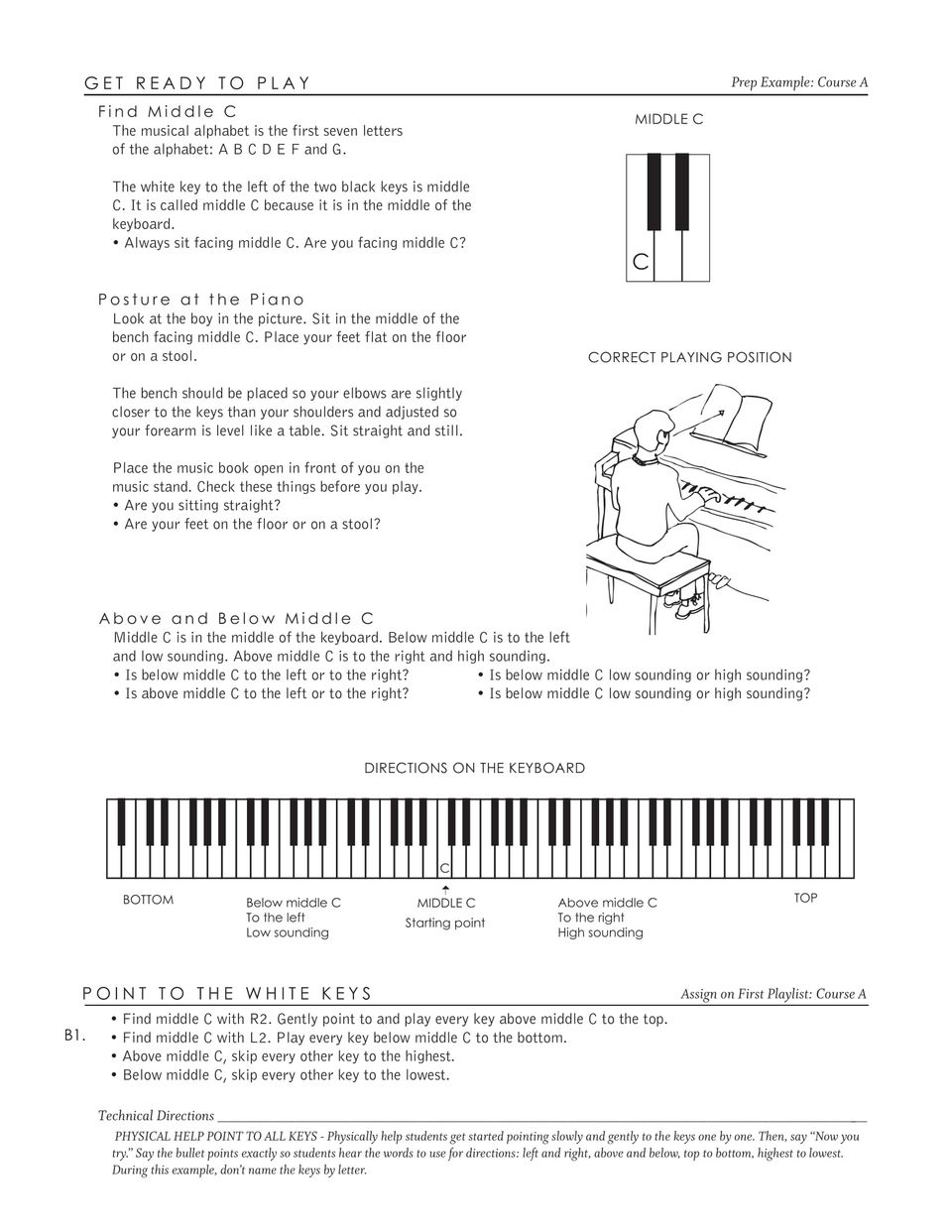Page 2
This is a subtitle for your new post

POSTURE, THE FIRST TECHNIQUE
To get ready to play, the first step is to sit correctly by the piano. Sitting correctly at the piano is just as important as starting from a resting and ready position in any sport . 1) First, plant the feet on the floor or a stool for balance, as you would plant your feet playing golf. 2) We adjust the bench distance so the arms are extended as if playing ping pong or batting a ball. 3) We adjust the bench height so the forearm is level as a balance beam in gymnastics. -- The bench at home should be set in the same way as at lessons, not too high or too low, and not too close. Most students will naturally want to sit too close as if at a desk or a table.
What can go wrong...
Unlike instruments that are fragile to hold and require special instruction just to create a sound, the piano is not fragile, and it is accessible to play at any age in any way. For this reason, most students often come to lessons with bad habits for posture, and players without training are often seated wrong. The first step in the overall process of training technique is to eliminate all natural, spontaneous, untrained, and uncontrolled movements by requiring students to keep themselves in a perfectly still position while playing. This step causes students to establish self-control, which is the first skill learned in playing the piano.
SIT STILL
At lessons, students sit still for a half hour with their minds completely focused on the activities of the lesson. We keep the brain, arms, and fingers always active going from one activity to the other and not stopping. This fast pace of the lesson helps students keep their mind off themselves and unto the things they are learning. During the lesson students are never allowed to get off the bench or leave the studio except in an emergency.
What can go wrong...
Younger students may wiggle on the bench or resist directions. We pay attention to this problem during the lesson, and teach proper behavior by moving the lesson along so quickly that students have no time to think of themselves or misbehave. Some teachers try to explain to students how they should act at lessons; and others will ask parents for help by sitting in on the lesson. These are not good solutions. Without help from parents or negotiating with students, we can get the student's attention at the lesson by teaching skills athletically in the fingers and arms in the same way as they are learned in sports and dance. This works because all children are interested in things athletic such as jumping higher, throwing further, and running faster.
POINT AND REACH
Middle C is the key in the middle of the keyboard. At the first lesson we point to all the white keys to the highest above middle C and to the lowest below middle C. Everything we do at the lesson has a purpose. In this exercise, students find middle C and point high with the right hand and low with the left hand. They reach with their arms while staying seated in the middle of the bench, not sliding on the bench or standing. And, while pointing, students carefully play one key at a time, and not randomly without thought or banging.
What can go wrong...
Without help from the teacher, students may want to stand to play all the keys, or slide on the bench to reach. Just imagine a pianist sliding on the bench and how silly that would look! We pay attention to training good habits right from the start. At this lesson students receive the good training of sitting in the center of the bench, reaching with the left hand to the lowest and the right hand to the highest, and pointing with a steady beat.